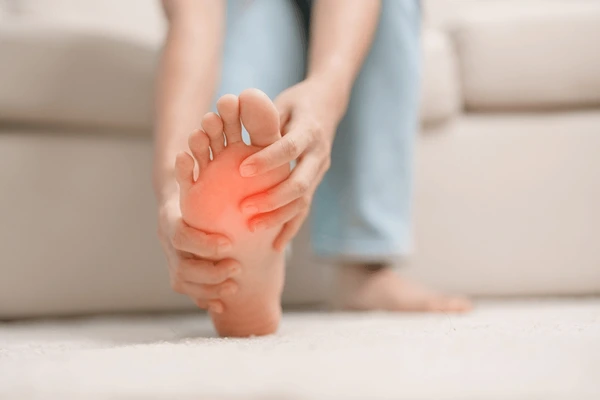Plantar Fasciitis Medical Devices. Aren’t you tired of the unbearable pain from plantar fasciitis? There are a number of medical gadgets provided by plantar fasciitis and these have taken on an important role when you have to bear with the disease.
All these medical gadgets offer much-needed treatment and support. Designed especially for the primary purpose of administering remedies related to plantar fasciitis, orthotic gadgets are those answers that may be received non-invasively to enhance the structure of your foot and reduce irritation.
These can be further worn in the form of splints or other scientific gadgets to reduce pain and promote healing without requiring surgical interventions or foot or ankle surgical remedies. For this article, the plantar fasciitis medical devices, will be discussed.
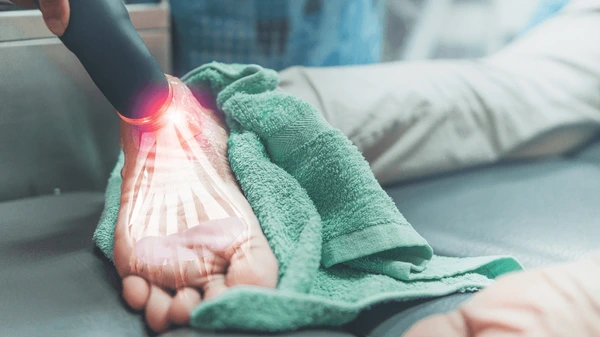
What is plantar fasciitis?
Plantar fasciitis causes an ache in the backside of the heel. The plantar fascia is a thick, web like ligament that connects your heel to the front of your foot. It acts as a shock absorber and helps the arch of your foot support you as you walk.
Plantar fasciitis is a commonly occurring orthopedic injury. Your everyday lifestyles subject your plantar fascia ligaments to significant wear and tear. Too much strain on your feet can harm or tear the ligaments. The plantar fascia becomes inflamed, and the irritation causes heel pain and stiffness.
The underlying cause of plantar fasciitis pain remains uncertain. A 2003 study cautioned that the state of affairs could also include degeneration due to infection of the plantar fascia. Given that fasciitis refers to the “contamination of a fascia,” a more accurate term could be “plantar fasciitis.”
What are the primary symptoms and signs of plantar fasciitis?
- The primary complaint associated with plantar fasciitis is pain at the base of the heel or occasionally in the midfoot area. Generally, it only affects one foot, but it can affect all of them.
- Plantar fasciitis often causes pain over time. The ache can be either dull or sharp. Some human beings sense a burning or pain on the bottom of the foot extending outward from the heel.
- Getting out of bed or sitting for a long time usually worsens the pain in the morning. Climbing stairs can be particularly challenging due to the stiffness in your heels.
- Extended interest can trigger a flare-up of pain due to prolonged infection or inflammation. Typically, people with plantar fasciitis experience pain not in the direction of the interest but after preventing it.
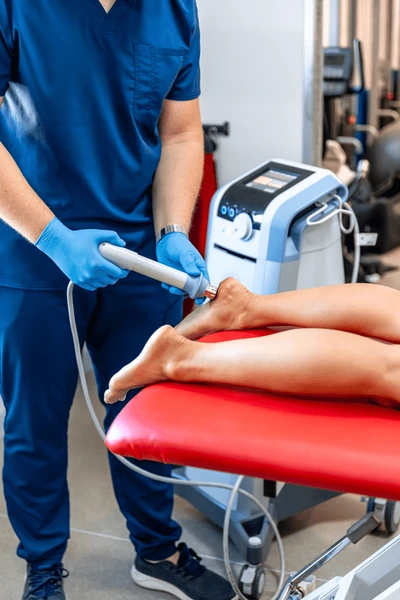
How Common Is Plantar Fasciitis, and Who Is at danger?
Plantar fasciitis, most common in adults aged 45 to 64, accounts for more than 1 million US hospital visits annually. Individuals who are more susceptible to plantar fasciitis include those with obesity or weight problems (defined as a body mass index greater than 25), those who require extended treatment, and those who have limited ability to move their feet upward along their knee, a condition known as reduced ankle dorsiflexion.
How is plantar fasciitis diagnosed?
When a clinician applies strain to a specific area of the heel or gently pushes the toes upward closer to the knee, they can diagnose plantar fasciitis in patients who exhibit signs and symptoms of heel pain.
People with an uncertain prognosis or signs and symptoms that do not improve with treatment may occasionally undergo ultrasound or magnetic resonance imaging of the ankle and foot.
How is plantar fasciitis treated?
- Individuals suffering from plantar fasciitis should refrain from participating in sports that exacerbate their pain. Potential treatment options include
Some calf muscle groups and the plantar fascia may be stretched along with massaged at home or during a visit to physical therapy. - Applying orthotics can help because they replace insole of a shoe to remove pressure on the plantar fascia and decrease the stress that occurs while walking on the foot. Over-the-counter orthotics offer similar pain relief and are significantly less expensive than custom-made orthotics.
- Wearing a nighttime splint to flex the ankle and boom the feet at some stage in sleep, or at other instances if it becomes intolerable at some point in sleep, is recommended.
- Receiving a corticosteroid injection in the internal region of the heel may also provide pain relief for several weeks to months.
- Receiving a heel injection of platelet-rich plasma, which contains significant components of the affected individual’s own blood, may provide a longer-term treatment for pain than corticosteroid injections.
- If the heel ache persists after nonsurgical remedies, consider undergoing a surgical operation on the plantar fascia or calf muscle.
In the upcoming section, we will discuss a few plantar medical devices.
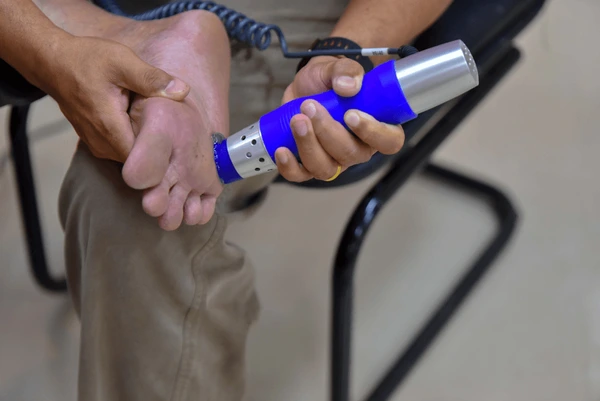
Plantar Medical Devices
In this section, we will discuss a variety of plantar medical devices.
Orthotics
If the affected individual exhibits extra subtalar joint pronation, it may result in a fractional strain on the plantar fascia, potentially leading to infection. It also potentially leads to the development of bone spurs, which in turn might lead to heel pain.
For an instance where the foot cannot dorsiflex at the ankle because of tight calf muscle tissues while walking, this would likely be contributing to your client’s plantar fascial pain It also potentially leads to the development of bone spurs, which in turn might lead to heel pain.
For an instance where the foot cannot dorsiflex at the ankle because of tight calf muscle tissues while walking, this would likely be contributing to your client’s plantar fascial pain. Orthotics can assist in maintaining the subtalar joint in an independent manner, decreasing this ache.
Depending on the particular needs of your involved patient, heel orthotics or full-length orthotics may be most appropriate.
Vasyli+McPoil Tissue Stress Relief Orthotics feature a twin-density design, making them suitable for active use, whereas, Vasyli+Hoke Supination Control Orthotics are designed to provide 3-dimensional support for regular everyday use. Fitting each of those to your patients may help alleviate their plantar heel pain.
TheraBand Foot Roller
Keep the foot roller within the freezer to make it cool, bloodless remedy, after which use it to instruct your patient how to use it. Get started!
1. Ask your patient to sit down and place the roller under their foot.
2. Ask your affected man or woman to roll gently on it for two minutes.
3. Then, ask the person affected to roll much harder with his foot for any remaining minutes.
You can re-do this exercise so that you get an accurate movement at the end of all sporty games. You can even encourage the affected person to perform the workout at his place.
TheraBand Roller Massager+
If the person you are running with has calf pain, especially if they are an older runner or have severe fibrosis, using a TheraBand Roller Massager+ might be helpful. Have your affected character lay on their back on a remedy desk with their knees bent.
Move the massager up and down the calf muscle to help mobilize the gastrocnemius. You can also instruct the affected individual on how to use the curler to mobilize their hips.
Finally, give the patient a chance to test the roller. It is a good tool for them to home as well.
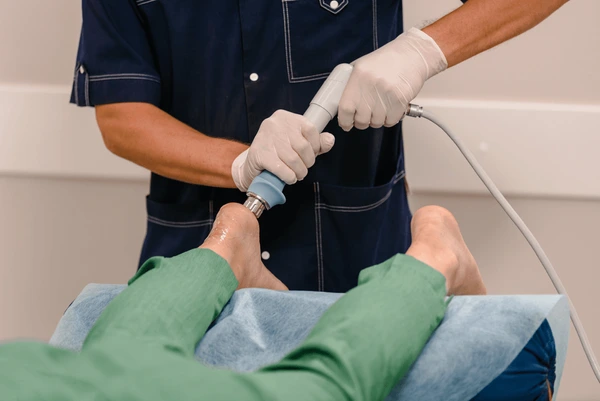
TheraBand Stability Trainer
Have the involved person stand on one leg in an unmarried-leg stance for observation. In spite of ground contact, excess pronation of the foot maintains this role. This exercise can be done without any equipment, and you can increase the difficulty of this exercise by incorporating a balance instructor. You can modulate the teacher’s resistance to suit the existing stability competencies of the involved person.
- Help the affected individual by standing on one leg.
- With the foot still on the ground, have the affected character dorsiflex their big toe, bringing them into an unbiased function.
As your affected individual improves at this workout, increase the intensity by following the steps below.
1.Place stability trainer on floor with textured side up.
2. Ask the character whom you are assisting to stand on one leg, using the stability trainer and artwork for support.
3. Ask your afflicted character to dorsiflex the foot that’s standing on the top of the stability trainer.
HawkGrips Dual-Edge Tongue Depressor Instrument
By the 1/three go-to and throughout subsequent visits, you’ll be equipped to start device-assisted slight tissue mobilization (IASTM). HawkGrip gadgets provide some of the equipment that will help you cut up fibrotic tissue and relieve your affected character’s plantar fasciitis.
1.Have your affected individual take a seat on the treatment table and expand one leg.
2. Work on all the foot additives that your affected character is experiencing problems with, such as the heel and the peroneus brevis.
3. Have the affected person lie on their belly and apply IASTM to their achilles and gastrocnemius.

Biofreeze Professional
If your affected character desires immediate relief from pain, suggest that they use Bio-Freeze in addition to the above-mentioned methods. Your busy health center will benefit from the gallon jug, and your patients can use smaller bottles and sprays at home.
The cooling treatment is an exquisite complement to all the sports your patients participate in, both inside the sanatorium and outside.
Plantar fasciitis is a persistent problem that doesn’t go away quick. By using a variety of equipment, you’re doing everything possible to help your patients return to their daily sports without pain!
These were few instant plantar fasciitis relief products.
Final Remarks
This is a very debilitating condition, but many medical devices for plantar fasciitis allow for non-invasive methods of treatment that can ease the discomfort and aid in recovery. These medical devices offer targeted assistance that does not increase the risk of infection but lowers the pressure on the plantar fascia. They can be part of an overall treatment plan so that those afflicted with plantar fasciitis may cope better with their illness, gain comfort in moving their limbs, and regain the ability to participate in activities necessary for sports.

